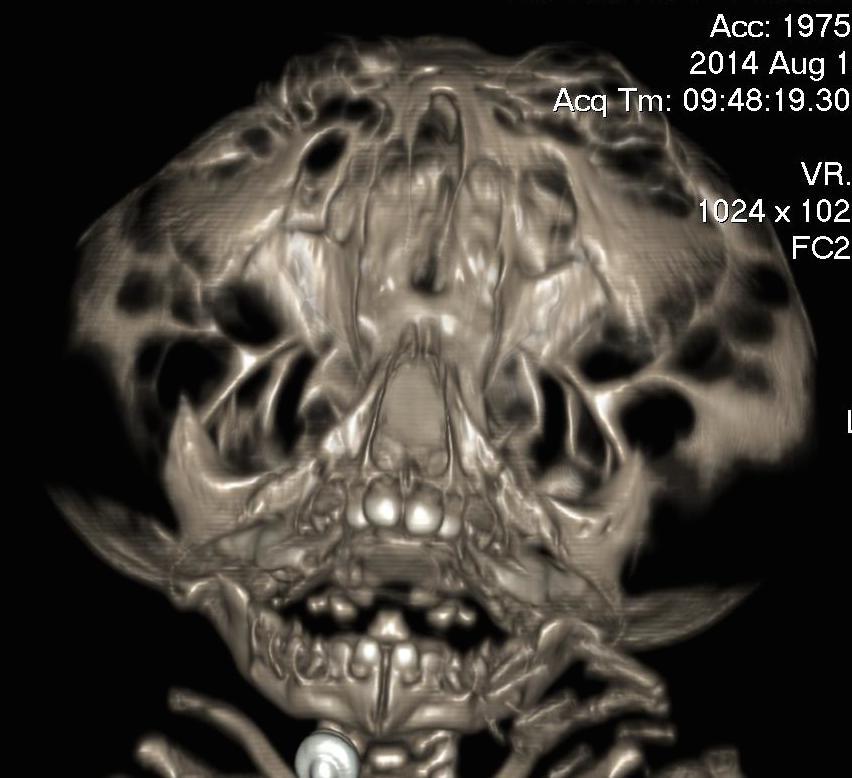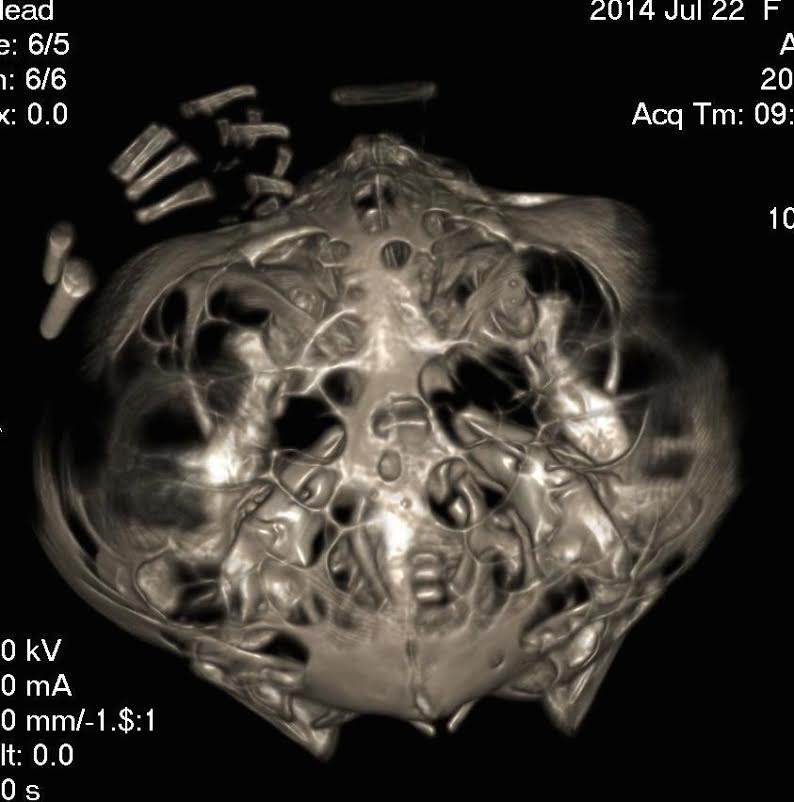 For those individuals who don’t believe that 3D printing has an ability to benefit society in any significant way, they need to take a step back from reading about the problems that the technology may cause, and start looking into the tremendous medical uses that it provides. We have covered several stories involving doctors in Mexico and Brazil who have utilized 3D printing to treat patients with disorders which previously were considered inoperable. 3D printing has enabled these complex and perhaps previously thought impossible surgeries to become successful not only in the developed world but in developing nations as well.
For those individuals who don’t believe that 3D printing has an ability to benefit society in any significant way, they need to take a step back from reading about the problems that the technology may cause, and start looking into the tremendous medical uses that it provides. We have covered several stories involving doctors in Mexico and Brazil who have utilized 3D printing to treat patients with disorders which previously were considered inoperable. 3D printing has enabled these complex and perhaps previously thought impossible surgeries to become successful not only in the developed world but in developing nations as well.
In Brazil, the Center for Information Technology Renato Archer (CTI) has really been at the forefront of using 3D printing technology within the medical field. Led by a doctor named Jorge Vicente Lopes da Silva, who is the chief of the Tridimensional Technologies Division at CTI, they have been responsible for making several previously thought to be inoperable surgeries quite possible. In August we covered their contributions in allowing for a very complex brain surgery in a baby, as well as one allowing a 12 year-old girl to have a huge tumor removed from her spine.
Today, Dr. Jorge Vicente Lopes da Silva has informed 3Dprint.com of another recently successful surgery that was made possible thanks to 3D printing technology.
“Some situations in life make us reflect on why we human beings exist, and this story shows a great example of our purpose in this world,” Dr. Silva tells us. “The birth of a baby is always associated with joy, but when plans fall through, there remains a sense of helplessness and dismay.”
 This is exactly what happened for one newborn baby in Brazil. The Craniofacial Plastic Surgery Unit and Paediatric Neurosurgery Unit of the Beneficência Portuguesa Hospital in São Paulo, Brazil, was faced with a major challenge in performing surgery on an infant who was born with Kleeblattschädel syndrome (also referred to as Cloverleaf Skull Syndrome). This disorder is found in one out of every 2,000 babies born each year. Traditionally, the prognosis for babies born with this disorder has been extremely poor, and these children are at high risk of either experiencing significant developmental delays or in some cases suffering from complications which ultimately lead to death.
This is exactly what happened for one newborn baby in Brazil. The Craniofacial Plastic Surgery Unit and Paediatric Neurosurgery Unit of the Beneficência Portuguesa Hospital in São Paulo, Brazil, was faced with a major challenge in performing surgery on an infant who was born with Kleeblattschädel syndrome (also referred to as Cloverleaf Skull Syndrome). This disorder is found in one out of every 2,000 babies born each year. Traditionally, the prognosis for babies born with this disorder has been extremely poor, and these children are at high risk of either experiencing significant developmental delays or in some cases suffering from complications which ultimately lead to death.
“It is a rare congenital Neuro-craniofacial disorder where the skull bones undergo a precocious soldering to each other,” Dr. Silva tells us. “As a consequence, the brain becomes entrapped in an inextensible bone box, which prevents brain growth. This anomaly is considered one of the most complex craniosynostosis and requires a multidisciplinary team in order to perform proper surgical treatment.”
 Until recently, cases involving this deformity have been considered inoperable. However, with the help of CTI in Brazil, surgeons were able to successfully create a 3D reconstruction of the child’s skull which could be used to operate on and successfully repair the deformity. Using open-source InVesalius software, Dr. Silva and his team were able to 3D print a replica of the skull.
Until recently, cases involving this deformity have been considered inoperable. However, with the help of CTI in Brazil, surgeons were able to successfully create a 3D reconstruction of the child’s skull which could be used to operate on and successfully repair the deformity. Using open-source InVesalius software, Dr. Silva and his team were able to 3D print a replica of the skull.
“The 3D technology on 3D printed models provide a view and better understanding of the surgery,” said Dr. Anderson Rodrigo Souza, a neurosurgery team member. “Our next step is the predictive study of surgery on 3D and computer models.”
The surgery was a success, and the child is currently showing signs of improvement, in both neurological and psychological development. Control tomography shows an increasing brain parenchymal as well.
“3D printing enabled the surgical team to accomplish a successful surgery,” explains Dr. Silva. “With a tangible and detailed replica, the surgeons were able to study and recognize complex structures, which would later be used as reference during surgery. The development of a realistic 3D model and its use in surgical planning shows how this technology can help surgeons perform surgeries on diseases previously considered inoperable.”
It seems as though every few weeks a new revolutionary surgery takes place with the help of 3D printed models. It should be interesting to see how much more 3D printing becomes a tool for surgeons in the coming years ahead. What do you think about the success of these surgeons in turning a previously inoperable surgery into a successful one? Discuss in the 3D Printing Saves Infant forum thread on 3DPB.com.

Subscribe to Our Email Newsletter
Stay up-to-date on all the latest news from the 3D printing industry and receive information and offers from third party vendors.
You May Also Like
Precision at the Microscale: UK Researchers Advance Medical Devices with BMF’s 3D Printing Tech
University of Nottingham researchers are using Boston Micro Fabrication‘s (BMF) 3D printing technology to develop medical devices that improve compatibility with human tissue. Funded by a UK grant, this project...
3D Printing Webinar and Event Roundup: April 21, 2024
It’s another busy week of webinars and events, starting with Hannover Messe in Germany and continuing with Metalcasting Congress, Chinaplas, TechBlick’s Innovation Festival, and more. Stratasys continues its advanced training...
3D Printing Webinar and Event Roundup: March 17, 2024
It’s another busy week of webinars and events, including SALMED 2024 and AM Forum in Berlin. Stratasys continues its in-person training and is offering two webinars, ASTM is holding a...
3D Printed Micro Antenna is 15% Smaller and 6X Lighter
Horizon Microtechnologies has achieved success in creating a high-frequency D-Band horn antenna through micro 3D printing. However, this achievement did not rely solely on 3D printing; it involved a combination...






























